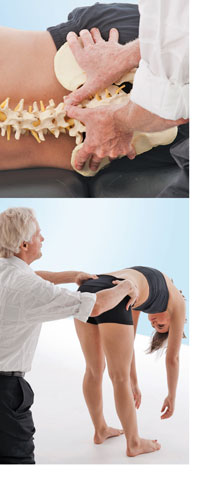 Please plan to arrive at the clinic at least 20 minutes prior to your appointment to fill out the New Patient/Client Forms. The parerwork provides us with general information about you and your condition. Alternatively, you may download the appropriate forms from this website and fill them out on your computer and print them. Please bring the completed forms in with you at the time of your initial assessment visit. These forms must be on file prior to the initial assessment. If you choose not to download these forms at home, you’ll have the opportunity to fill them out by hand when you arrive for your appointment.
Please plan to arrive at the clinic at least 20 minutes prior to your appointment to fill out the New Patient/Client Forms. The parerwork provides us with general information about you and your condition. Alternatively, you may download the appropriate forms from this website and fill them out on your computer and print them. Please bring the completed forms in with you at the time of your initial assessment visit. These forms must be on file prior to the initial assessment. If you choose not to download these forms at home, you’ll have the opportunity to fill them out by hand when you arrive for your appointment.
Assessment is necessary before treatment. The initial evaluation reviews your history and might include questions about exercise, diet, emotional issues and life style stresses. During this time, you have the opportunity to discuss your musculoskeletal health concerns, treatment goals, health history, and any referral matters. If you have any diagnostic information relevant to your visit such as radiology reports, X-rays, CT scans, MRI or MRE imaging, EMG results, prescription, physical therapy protocols currently or recently followed, etc., please bring them with you or ask your physician to forward them to us prior to your appointment.
In order to achieve maximum therapy results, first of all, we start from making an accurate assessment. We always look for patterns of dysfunction created by muscle imbalance and osseous misalignment and apply systematic myofascial and (non-force) osseous alignment therapy as needed. Also we teach our clients proper neuromuscular re-training exercises to reinforce the newly introduced patterns. In any type of alignment therapy, the client’s active participation in his recuperation and restoration is extremely important while dysfunctional strain patterns are systematically removed and replaced by proper body alignment and balance. Usually muscle imbalance patterns are mainly caused by trauma, tension, and poor posture. However, these imbalance patterns are clinically predictable according to the ways they affect the neuromuscular system. It is a very important to take into consideration that all striated muscles in the body have a tendency to develop predictable imbalance patterns before the onset of pain. By recognizing and treating muscle imbalances and strain patterns in the body, we can bring order and balance to the body before pain starts. This is the primary goal of our treatment. After thorough assessment we apply specific techniques and methods aimed at structurally rehabilitating the client’s body, thus creating more efficient movement patterns.
Our second goal is to establish pain-free movement during the walking cycle. To accomplish this task, we must test for muscle imbalances, recognize strain patterns as they present themselves, and always attempt to restore function in the alignment process.
We do not treat without a treatment plan, and we do not chase pain. Pain is a symptom and we’re looking for cause.
